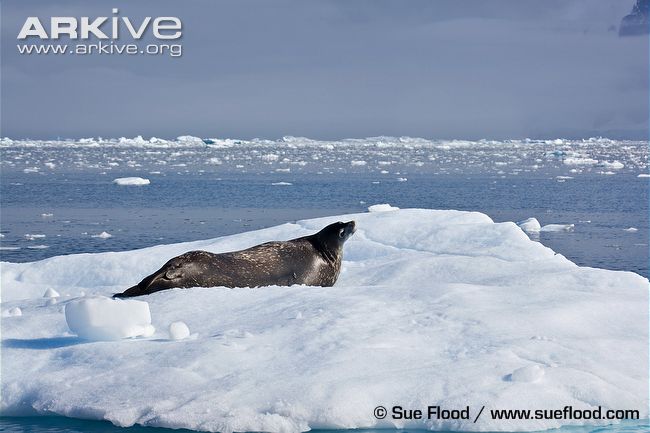Interactions
The Weddell seals have an intense competitive relationship with other seals that feed in the shallower portions of the ocean since fish is what is mostly consumed by all seals (Terhune, 1994).
Most
of all Weddell seals are impacted by what is known as
Antarctophithirus ogmorhin; a parasitic worm that lives
in the arctic regions of the world
 (Bayi, O. 2000). These worms are
free-floating and typically live near the ocean floor,
which is why Weddell seals are one of the only seal
species to be affected by these parasites. After they
are ingested, the worms attack the posterior part of the
animal, specifically its genital region. The seal
regurgitates the worms into their mouth to try to expel
them out, but this typically does not work. Another
parasite that attacks the Weddell seal is lice (Bayi, O.
2000).
(Bayi, O. 2000). These worms are
free-floating and typically live near the ocean floor,
which is why Weddell seals are one of the only seal
species to be affected by these parasites. After they
are ingested, the worms attack the posterior part of the
animal, specifically its genital region. The seal
regurgitates the worms into their mouth to try to expel
them out, but this typically does not work. Another
parasite that attacks the Weddell seal is lice (Bayi, O.
2000).
Moreover, humans have been known to kill Weddell seals to use as dog food. On a positive note, humans also have used studies of the Weddell seal vocalizations in order to advance our ability to understand and potentially communicate to animals (Terhune, 1994).
List of references used in this section:
Stirling, I. 1971. Leptonychotes weddelli. Mammalian Species. No. 6. The American Society of Mammalogists.
Bayi, O. 2000. "Leptonychotes weddellii" (On-line), Animal Diversity Web. Accessed April 18, 2014 at http://animaldiversity.ummz.umich.edu/accounts/Leptonychotes_weddellii
Terhune, J. M. 1994. Bioacoustics. Vol. 5. pp. 223-6. The International Journal of Animal Sound and its Recording. Great Britian.
Choose your adventure:
To learn some interesting facts about Weddell seals, click here.
OR
To return back to the home page, click here.